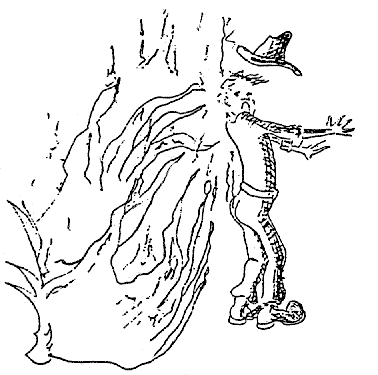Wall of Fire
By W.L. (“Steve”) Stevenson
Search and Discovery Article #12001 (1999)
(from The Sumner [Illinois] Press—3/16/92)
|
| Most of us who have spent a lifetime in the oil
business have faced real danger at various times in
working with our stock in trade, highly flammable oil and
gas. One such event occurred to me when l was a young
field engineer in Northeast Texas. We had drilled a
development well to 8500 feet in the Quitman Field in
Wood County and found the pay zone too tight to produce
at normal rates. The decision was made to acidize the
zone to increase the flow rate. A service company was
called and a large pump truck loaded with acid was
brought to the well site. The day scheduled for the operation dawned pleasantly cool without even a faint breeze stirring. We began pumping acid down the tubing and letting the high gravity crude oil that was in the tubing flow back to the surface through the space between the tubing and the casing into a 210 barrel tank with an open vent at the top. Unfortunately, the oil in the well contained more dissolved natural gas than anticipated and we failed to realize the amount of gas that was escaping from the vent. Further, we were also unaware that the pump truck had faulty spark-arresting equipment on its exhausts. While the pumping process was getting underway, I had been standing near the wellhead watching the pressure gauges. For some unexplained reason I decided to cross the location area to retrieve something from my car, which was some 300 feet away. About halfway to the car the sensation of extreme heat on my back and rear caused me to look back toward the wellhead. The view was terrifying. There had been no flash and no explosion, but not more than 10 feet behind was a wall of blue flame about three feet high extending for 100 feet or more across the location. The barrier of fire slowly retreated as it burned toward the source of the gas, which was the vent at the top of the tank. Fortunately, the operator of the pump truck was unaware of the fire until his feet began to feel hot, he told us later. At that time he jumped out of the truck just as the fire moved past. Had he abandoned the truck any sooner he would have stepped directly into a horrible death. The wall of flame was almost like a living being as it slowly crept along and funneled toward the tank and finally reached the tank vent where it flared vividly. The fire apparently acted as it did because the gas had formed a very dense layer at ground level on a very calm, damp morning. When it reached the top of the tank we began to worry about the possibility of a higher concentration of oxygen in the tank that could result in an explosion that could blow flaming oil all over the location and kill everyone present. The decision was made to keep the casing valve open and feed the flare at the tank vent until people and vehicles were cleared from the area. We finally located a large portable fire extinguisher that was placed in a pickup truck and driven within a few feet of the flame. With a combination of fear and foolhardiness we closed the casing valve, turned the extinguisher into the tank vent and hoped an explosion did not follow. Fortunately, the plan worked; we all survived and I escaped with only the indignity of a hot-seat. It has been many years since I have been exposed to well safety methods, but somehow I doubt that our solution to the problem would meet today's O.S.H.A. standards. |

